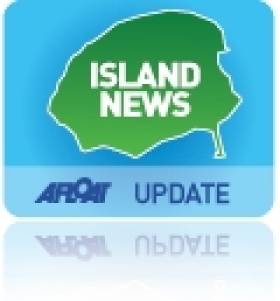Displaying items by tag: Aran Doolin Ferries
Ferry Runs Aground off Doolin for Three Hours
According to ferry operator Kevin O'Brien, there were no passengers on board at the time and the vessel got under way again when it was lifted from the rocks with the tide. Mr O'Brien added "this was a very minor incident and there was no damage to the ferry. Doolin is tidal so these things do happen. Even a few inches of water can make a difference".
The Irish Coast Guard was notified of the incident at midday, and its marine rescue co-ordination centre in Dublin requested that members of the local Coast Guard unit board the vessel to assess if there was a pollution risk.
Doolin Coast Guard personnel carried out an inspection and confirmed the ferry had not been damaged and there was no risk of pollution. At about 2.15pm the ferry got under way again with the tide. The company was able to operate services to and from the Aran Islands with its second vessel.
Auction of Aran Islands Passenger Ferry Sisters
Aran Direct (which was the trading name for Bád Arann Teoranta) operated on routes between Rossaveal to Inis Mór, Inis Meáin and Inis Oírr. The company competed in an intensely competitive market with at least 10 other vessels combined from the fleets of Aran Doolin Ferries, Aran Island Ferries and the Doolin Ferry Company.
In September 2008, Aran Direct ceased operations and the vessels were laid-up at Rossaveal, where they remain, as seen (if not previously sold) prior to the public auction.
At the instructions of Liam Dowdall Esq., Receiver & Manager, Bád Arann Teoranta (in receivership), the vessels are to be sold in one or separate lots. The public auction is to be held at 12 noon on Thursday 24th February at the Harbour Hotel, The Docks, Galway.
An outline of the vessels details can be downloaded in PDF format by clicking HERE. For further details, photographs and conditions of sale contact Dominic J. Daly, Auctioneer, Cork Tel: (021) 4277399 or E-mail: [email protected] and logging on to www.dominicjdaly.com
For further technical details, you can contact Noel O'Regan of Promara Ltd on 087 3435666 or email [email protected]





























































